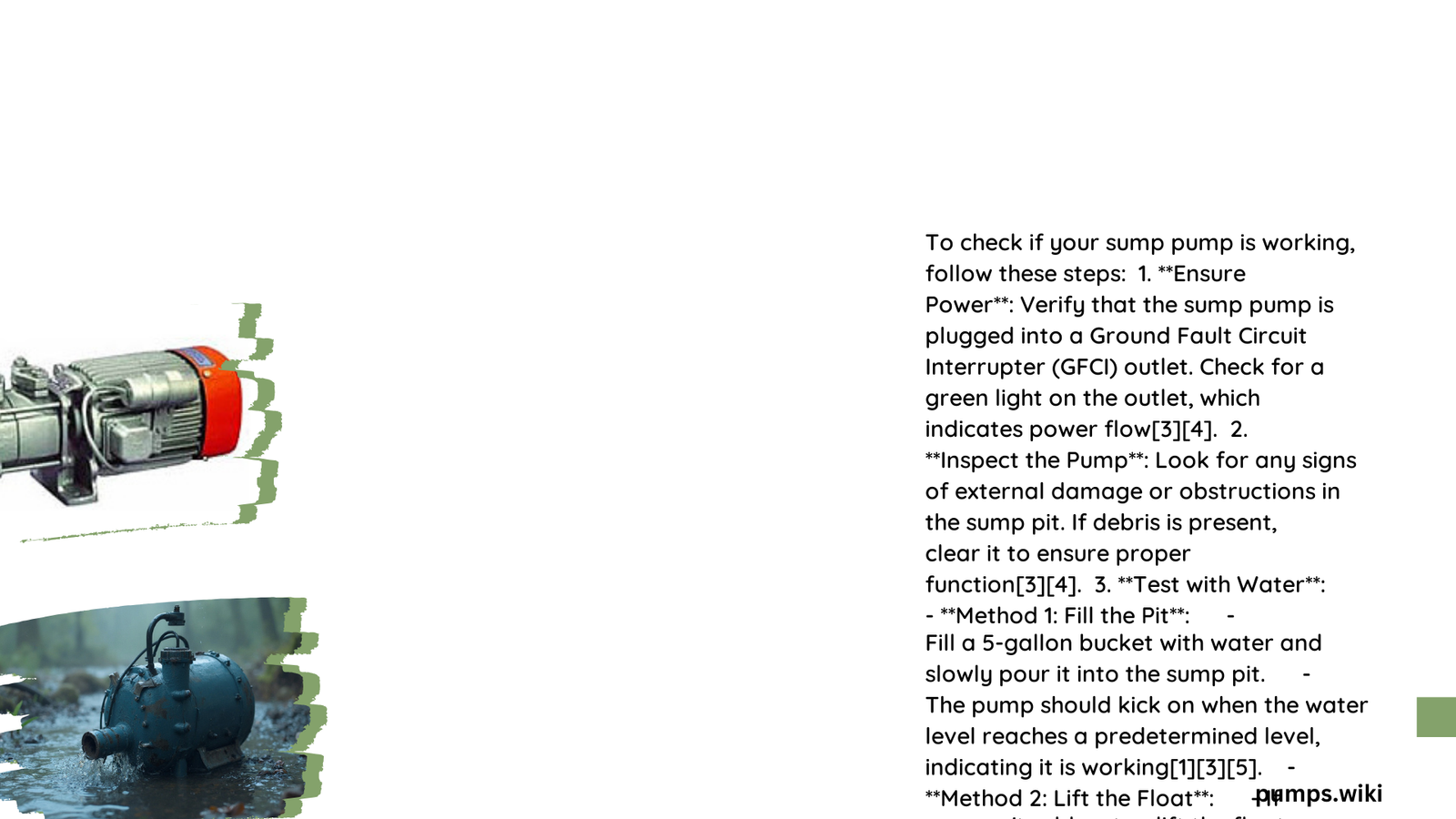Checking your sump pump to see if it’s working is crucial for preventing basement flooding and water damage. This guide provides step-by-step instructions on how to test your sump pump, troubleshoot common issues, and ensure optimal performance. From visual inspections to water tests and electrical checks, you’ll learn everything you need to keep your sump pump in top condition.
How Can I Visually Inspect My Sump Pump?
Before diving into more detailed tests, start with a visual inspection of your sump pump:
- Remove the sump pit cover and examine the pump for any visible damage or debris.
- Check the electrical cord for fraying or damage.
- Ensure the pump is level and properly positioned in the pit.
- Look for signs of rust or corrosion on the pump and components.
- Verify that the float switch moves freely without any obstructions.
What Are the Steps to Perform a Water Test?

A water test is one of the most effective ways to check if your sump pump is working:
- Fill a 5-gallon bucket with water.
- Slowly pour the water into the sump pit.
- Observe the float switch as the water level rises.
- The pump should activate when the water reaches a certain level.
- Watch to ensure the pump removes the water efficiently.
- Listen for any unusual noises during operation.
If the pump doesn’t activate or struggles to remove the water, you may need to troubleshoot further or consider professional maintenance.
How Do I Check the Electrical Components?
Ensuring proper electrical function is crucial for sump pump operation:
- Verify that the pump is plugged into a GFCI (Ground Fault Circuit Interrupter) outlet.
- Unplug and replug the pump to see if it turns on immediately.
- Use a multimeter to check voltage and amperage:
- Voltage should typically be around 120V
- Amperage should match the manufacturer’s specifications
- Inspect all wiring connections for looseness or corrosion.
- If you have a battery backup system, check the battery’s charge level and condition.
What Should I Look for When Inspecting the Float and Check Valve?
The float and check valve are critical components of your sump pump system:
Float Inspection:
- Ensure the float moves freely up and down.
- Check for any debris or obstructions around the float.
- Verify that the float activates the pump at the correct water level.
Check Valve Inspection:
- Locate the check valve on the discharge pipe.
- Ensure it’s installed in the correct direction (arrow pointing away from the pump).
- Listen for any rattling or banging when the pump runs, which could indicate a faulty check valve.
How Can I Measure My Sump Pump’s Performance?
To quantitatively assess your sump pump’s performance:
- Measure the flow rate:
- Use a ruler to measure water inflow during heavy rain.
- Calculate Gallons Per Minute (GPM) based on pit dimensions and water level change.
- Monitor cycle times:
- Count how often the pump activates in an hour during normal conditions.
- Frequent cycling may indicate issues like a small pit or clogged discharge pipe.
- Calculate Total Dynamic Head (TDH):
- Measure vertical lift (Static Head).
- Estimate friction loss in pipes (Friction Head).
- Add these together to get TDH.
- Ensure your pump’s capacity exceeds this TDH value.
| Measurement | Method | Ideal Range |
|---|---|---|
| Flow Rate | GPM calculation | Varies by pump model |
| Cycle Time | Activations per hour | 2-3 times/hour (normal conditions) |
| TDH | Static Head + Friction Head | Below pump’s max capacity |
What Are Common Troubleshooting Methods for Sump Pumps?
If you encounter issues during your checks, try these troubleshooting methods:
- No power:
- Check GFCI outlet and reset if tripped.
- Inspect electrical connections for damage.
- Pump won’t activate:
- Clean or adjust the float switch.
- Check for clogs in the impeller.
- Poor water removal:
- Clear any blockages in the discharge pipe.
- Verify check valve operation.
- Unusual noises:
- Tighten any loose mounting bolts.
- Check for worn bearings or impeller damage.
- Frequent cycling:
- Adjust float switch settings.
- Consider a larger sump pit or pump capacity.
How Often Should I Perform These Checks?
To maintain optimal sump pump performance:
- Conduct visual inspections monthly.
- Perform water tests quarterly.
- Check electrical components bi-annually.
- Clean the pump and pit annually.
- Replace the pump every 7-10 years, depending on usage and manufacturer recommendations.
By following these guidelines and regularly checking your sump pump to see if it’s working, you can ensure your basement stays dry and your property remains protected from water damage.
